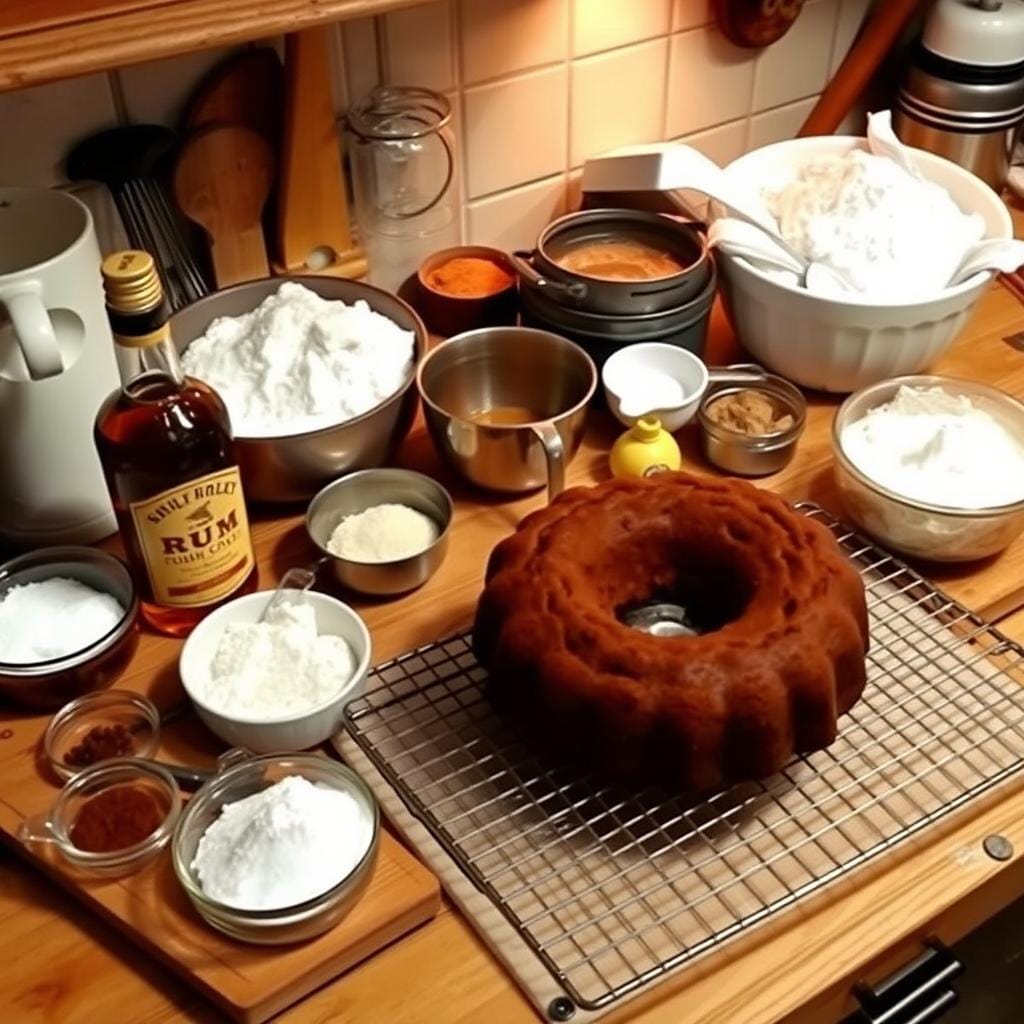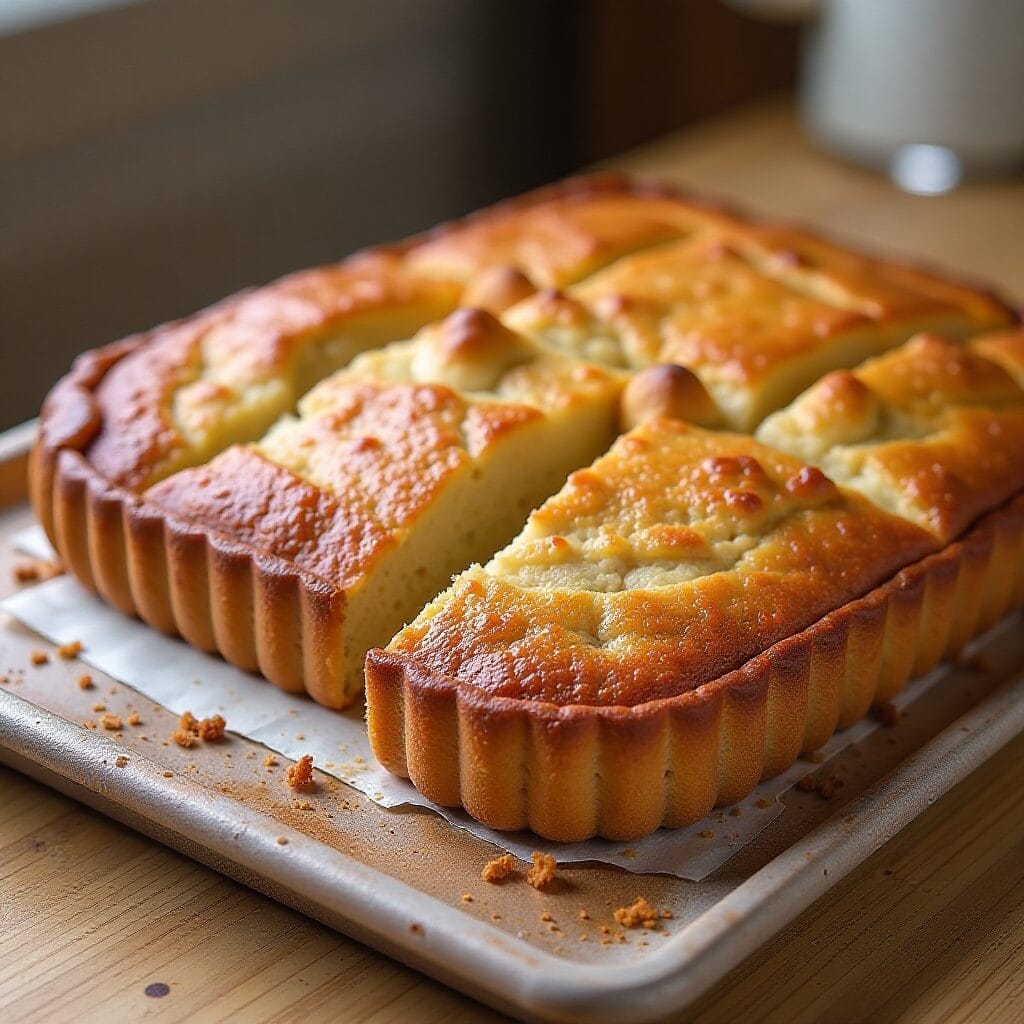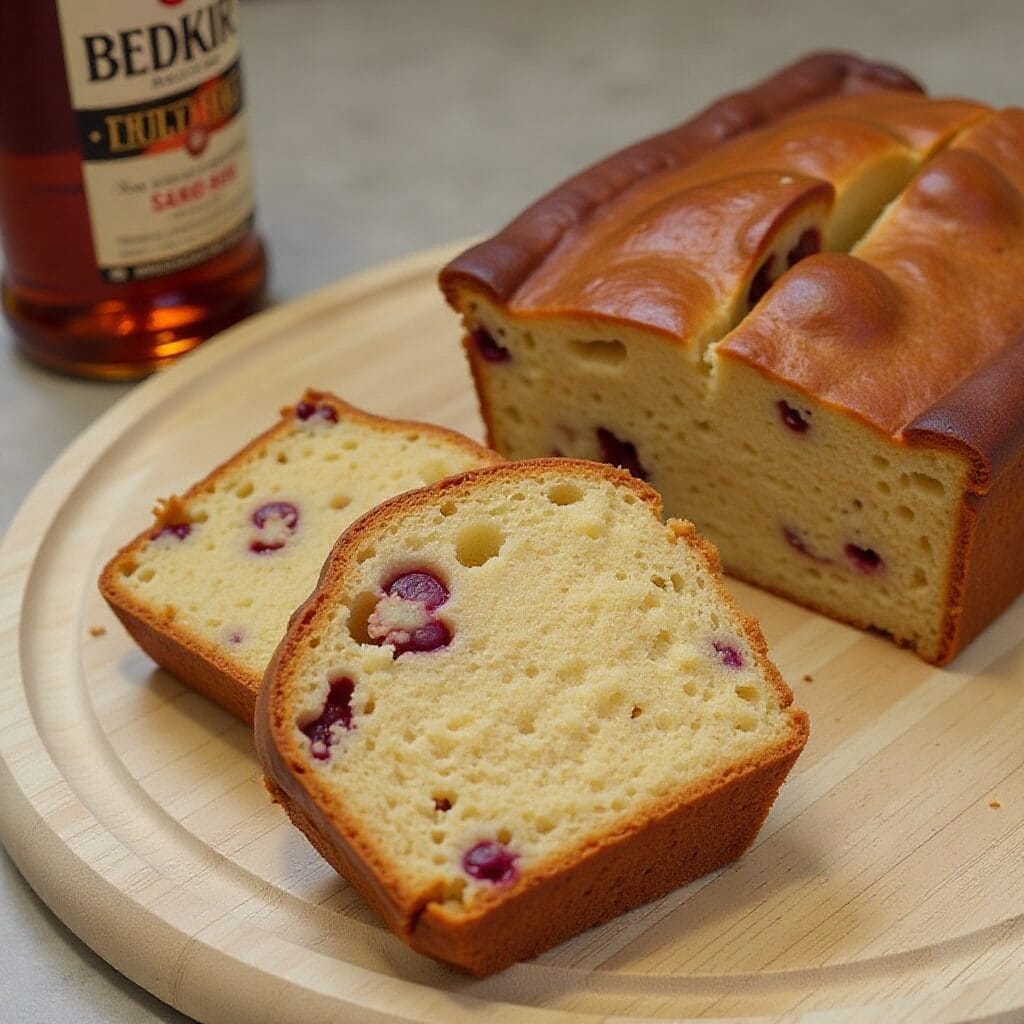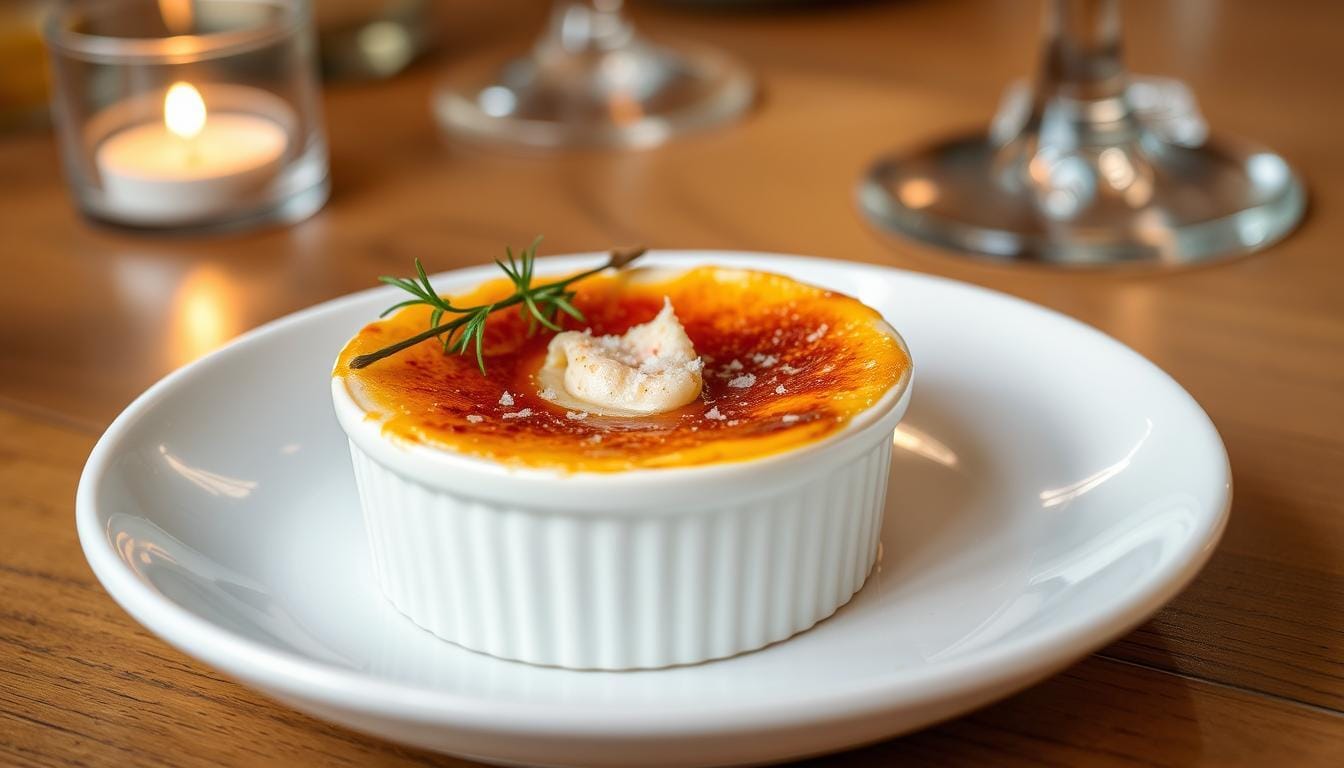How much alcohol is in baking with rum? As a home baker, I love the rich, caramel flavor rum adds to desserts. But how much alcohol remains in these treats? Are they safe for everyone?
In this guide, we’ll explore baking with rum. We’ll look at the science of alcohol content, safety, and how to use rum in your recipes. This will help you make delicious, responsibly crafted baked goods.
Key Takeaways
- Understand the varying alcohol content in different types of rum used for baking
- Discover how baking temperature and time affect the evaporation of alcohol in your recipes
- Learn about the differences between using rum extract and real rum in baking
- Explore non-alcoholic alternatives and natural rum flavoring options for baking
- Familiarize yourself with best practices for accurately measuring rum in your recipes
Understanding Rum’s Role in Baking
Rum is a great choice for baking, adding flavor to your treats. It comes in dark and light varieties, each with its own taste. Dark rum is rich and aromatic, while light rum is crisp and clean.
Different Types of Rum for Baking
Dark rum is perfect for baking with spices, chocolate, and dried fruits. It’s a favorite for making rum cakes and fruitcakes.
Light or white rum adds a subtle rum flavor to baked goods. It’s great for recipes like rum-infused cookies and rum-glazed donuts.
Spiced rum adds a unique twist to your baked goods. It’s great in gingerbread, rum-raisin bread, and rum-infused pies.
Why Rum Enhances Baked Goods
Rum’s flavor, with notes of caramel and vanilla, adds depth to your baked goods. The alcohol in rum also makes them softer and more tender.
Common Rum-Based Recipes
- Rum-soaked fruitcake: A classic holiday favorite that combines the richness of rum with dried fruits and nuts.
- Rum-raisin bread: A moist and flavorful loaf that showcases the natural sweetness of raisins and the warmth of rum.
- Rum-glazed baked donuts: A fun and indulgent treat that combines the lightness of baked donuts with the smooth flavor of rum.
- Rum-infused cookies: From classic rum balls to rum-flavored shortbread, these cookies offer a delightful twist on traditional recipes.
Exploring baking with how much alcohol is in baking with rum? opens up new possibilities. Whether it’s a decadent rum cake or infused baked goods, rum makes your baking special.

How Much Alcohol Is in Baking with Rum?
Many wonder how much alcohol stays in rum-infused baked goods. The amount left depends on several factors. Generally, most of the alcohol is lost during baking.
The alcohol in rum-infused treats can be from 4% to 40% of the rum’s original alcohol. This percentage changes based on the rum amount, baking temperature, and time.
For instance, using 1/4 cup of 80-proof rum (40% ABV) in a recipe. Baking at 350°F (175°C) for 30 minutes might leave 10-15% of the rum’s alcohol. This means about 4-6% of the baked good’s total volume.
But, the alcohol content can vary a lot. Some treats, like rum cakes or rum balls, might keep more alcohol. This is because they bake longer or have more liquor.
To know the alcohol in your rum-based treats, check reliable sources. Or ask a culinary expert for advice.

“The alcohol content in baked goods made with rum can range from 4% to 40% of the original rum’s alcohol by volume (ABV).”
Knowing the alcohol in your rum-infused treats lets you enjoy their flavors. It also makes sure they’re good for all your guests.
The Science Behind Alcohol Evaporation in Baking
Baking with spirits like rum requires knowing about alcohol evaporation. The oven’s temperature and how long you bake affect the alcohol in your treats.
Temperature Effects on Alcohol Content
Alcohol boils at about 78°C (172°F), much lower than water. As your oven heats up, the alcohol in your mix evaporates quicker. The hotter your oven, the quicker the alcohol disappears, making your treats less strong.
Baking Time and Alcohol Retention
The longer your treats bake, the more alcohol evaporates. Recipes that bake longer will have less alcohol than those that bake less.
Factors Affecting Evaporation Rate
- Oven temperature: Higher temperatures speed up alcohol evaporation.
- Baking time: Longer baking times mean more alcohol is lost.
- Liquid content: More liquid ingredients, like milk or eggs, help keep alcohol in.
- Surface area: Treats with more exposed surface area lose alcohol faster.
Knowing these science facts helps you control the alcohol in your rum-based treats. This way, you can make sure they’re always enjoyable.
Rum Extract vs. Real Rum in Baking
In baking with spirits, you can choose between rum extract or real rum. Each has its own benefits and things to think about. These choices can change how your baked goods turn out.
Rum extract is a strong flavor that tastes like rum but has no alcohol. It’s great for those who want to enjoy rum flavor without getting drunk. It’s also cheaper and lasts longer than real rum.
But, using real rum can give your baked goods a deeper, more real flavor. The alcohol in rum can make your treats richer and warmer. Yet, remember that some of the alcohol will stay in your baked goods. So, you need to use the right amount for your recipe and who you’re making it for.
| Attribute | Rum Extract | Real Rum |
|---|---|---|
| Alcohol Content | None or negligible | Varies by rum type |
| Flavor Profile | Concentrated rum essence | Complex, nuanced rum flavor |
| Cost | Generally more affordable | Can be more expensive |
| Shelf Life | Longer shelf life | Shorter shelf life, due to alcohol content |
When picking between rum extract and real rum for baking, think about your recipe, what you like, and who you’re making it for. Try both to see which works best for your cooking.
Non-Alcoholic Alternatives for Rum in Baking
If you want to avoid alcohol in your baking or follow dietary rules, there are great options. You can find natural rum flavorings and make your own alcohol-free rum substitutes at home.
Natural Rum Flavoring Options
Looking for rum’s flavor without the alcohol? Try natural non-alcoholic rum flavoring. These extracts or essences capture rum’s rich, caramelized taste. You can add this flavor to your baked goods. Many stores and online shops have a wide range of non-alcoholic rum flavorings.
Making Alcohol-Free Rum Substitutes
- Make a homemade alcohol-free rum substitute by mixing vanilla extract, molasses, and a bit of caramel or maple syrup. These ingredients bring out the complex flavors of traditional rum.
- Try mixing non-alcoholic rum flavoring with water or plant-based milk. This will give you the taste and consistency of rum.
- For a closer taste, use a non-alcoholic distilled spirit or mix non-alcoholic flavorings with a bit of molasses or brown sugar.
With a bit of creativity and trying different things, you can find the best non-alcoholic rum flavoring or substitute. This way, you can make your baked goods taste great without using real rum.
Safety Considerations When Baking with Rum
When baking with spirits like rum, safety is key. The alcohol content in baked goods can be tricky. It needs careful attention.
First, handle alcohol safely in the kitchen. Make sure there’s good air flow. Don’t have open flames near alcohol. Be careful when adding rum to your recipes. Spills or eating too much rum can make you drunk. So, it’s important to serve and eat responsibly.
Also, think about who will eat your rum desserts. Clearly label any rum-based treats. This way, you avoid accidental drinking. Offer non-alcoholic options for those who can’t or don’t want to drink rum.
- Proper ventilation and safe handling of alcohol in the kitchen
- Responsible serving and consumption of rum-infused baked goods
- Clear labeling of rum-based desserts to avoid unintended consumption
By following these safety tips, you can enjoy rum’s flavor in baking. And make sure everyone has a safe and fun time.
“Responsible baking with rum means ensuring the safety and enjoyment of all those who indulge.”
Best Practices for Measuring Rum in Recipes
When baking with rum, getting the right amount is key. Whether it’s baking with spirits or a certain rum, sticking to the recipe is vital. It helps achieve the perfect flavor and texture in your treats.
Converting Measurements for Different Rum Types
Different rums, like light, dark, or spiced, have different alcohol levels. It’s important to adjust the amount when switching rums in a recipe. Use the same volume, but check the alcohol content and adjust if needed.
Tips for Accurate Rum Portioning
- Use a liquid measuring cup for precise measurements, rather than relying on standard measuring spoons.
- Double-check the recipe’s specified amount of rum and be mindful of any adjustments required based on the type of rum used.
- If the recipe calls for a small amount of rum, consider using a rum extract or rum flavoring instead to avoid overpowering the other ingredients.
- Adjust the rum quantity based on your personal preference or dietary needs, but be aware that it may impact the final flavor and texture of the baked goods.
By following these tips, you can make sure your baking with rum turns out great every time.
Impact of Rum on Texture and Flavor Profiles
Using spirits like rum in baking changes your desserts a lot. Rum’s special smell and how it keeps things moist can really change your desserts.
Rum makes flavors deeper and richer. It adds tastes of caramel, vanilla, and oak. This makes your cakes and cookies taste more complex. Rum extract can give these flavors without the alcohol, making it great for bakers.
Rum also keeps baked goods moist. This is because of the alcohol in rum. It helps keep cakes and desserts soft and moist. This is good for bakes that might dry out, like those with whole-wheat flour or nuts.
| Rum Type | Flavor Impact | Texture Influence |
|---|---|---|
| Light Rum | Delicate, subtle flavors | Slight moisture retention |
| Spiced Rum | Warm, spicy notes | Moderate moisture retention |
| Dark Rum | Rich, bold flavors | Significant moisture retention |
The type of rum you use changes how your baked goods turn out. Light rum adds subtle flavors, while dark rum brings bold tastes. Each type can make your desserts even better.
“Rum’s ability to retain moisture and add depth of flavor is what makes it such a versatile ingredient for baking.”
Learning about rum’s effects on texture and taste opens up new possibilities in baking. Try different rums and see how they change your desserts!
Storage Guidelines for Rum-Based Baked Goods
Baking with spirits like rum adds a unique flavor to your treats. But, you need to store them right to keep the flavor and alcohol content in baked goods intact.
Always store rum-based baked goods in an airtight container. You can keep them at room temperature or in the fridge, depending on the recipe. This stops the alcohol from evaporating, keeping your desserts tasting like rum.
- Room temperature storage is best for denser items like cakes, cookies, or bars.
- Refrigerate more delicate or cream-based treats, such as pies or mousses.
Also, remember how long your rum-laced baked goods last. The alcohol content in baked goods helps preserve them, but most last 3-5 days. Freezing can make them last weeks longer.
| Storage Method | Shelf Life |
|---|---|
| Room Temperature | 3-5 days |
| Refrigeration | 5-7 days |
| Freezing | 2-4 weeks |
By storing your rum-infused baked goods correctly, you keep their alcohol content in baked goods and flavor. Your guests will love every bite of the spirit-forward taste.
Common Mistakes to Avoid When Baking with Rum
Baking with rum adds depth and warmth to desserts. But, it can go wrong if not done right. To make sure your rum-infused baking is a hit, avoid these common mistakes.
One big mistake is over-pouring rum. The smell of rum can make you pour too much. Too much rum can make your desserts taste too boozy.
Another mistake is improper substitution. Recipes often specify a certain rum type. But, bakers sometimes use whatever rum they have. Different rums have different tastes and alcohol levels. Always check the recipe and use the right rum.
- Avoid over-pouring rum into your recipes
- Be cautious when substituting one rum for another
- Consider the alcohol content of the rum and adjust the recipe accordingly
Lastly, don’t forget about the alcohol content of the rum. Some alcohol evaporates during baking, but it’s hard to know how much. If you underestimate the alcohol, your desserts might be too strong. If you overestimate, they might be dry.
By avoiding these mistakes and following best practices for baking with spirits, you’ll make delicious rum-infused desserts. They’ll impress your friends and family.
Conclusion
Baking with rum can be a fun and tasty adventure. But, it’s important to think about the alcohol content. The Jamaican Black Cake is famous for its strong alcohol, making it a special treat.
Learning about how alcohol evaporates in baking helps you manage its levels. The type of rum, temperature, and baking time all affect the alcohol content. Also, you can use non-alcoholic rum substitutes for those who want flavor without the alcohol.
When baking with rum, always be safe and responsible. Measure your ingredients well and think about how rum changes the texture and taste of your desserts. With these tips, you can make amazing rum-based treats that will wow everyone.
FAQ
How much alcohol is retained in baked goods made with rum?
The amount of alcohol in rum-based baked goods can change. This depends on the rum amount, baking temperature, and baking time. Most of the alcohol in the rum will evaporate. But, some alcohol might still be in the final product.
Can I use rum extract instead of real rum in baking?
Yes, you can use rum extract as a substitute. Rum extract gives the rum flavor without the alcohol. It’s great for those who don’t want alcohol in their baked goods.
Are there any non-alcoholic alternatives to rum for baking?
Yes, there are non-alcoholic options for rum in baking. You can use natural rum flavorings or homemade rum-flavored syrups. Or, mix vanilla extract with spices to get a rum-like flavor.
How should I store rum-based baked goods?
It’s key to store rum-based baked goods right. Keep them in an airtight container at room temperature. Avoid direct sunlight or heat. For some recipes, especially those with alcohol or perishable items, refrigeration might be needed.
What are some common mistakes to avoid when baking with rum?
Avoid using too much rum and not considering the alcohol content. Also, don’t forget to let the alcohol evaporate during baking. Always measure rum correctly and follow the recipe to get the best results.


